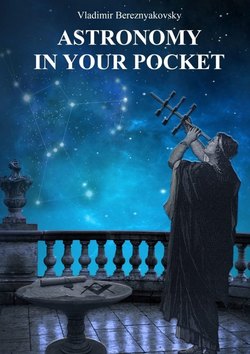Читать книгу Astronomy in your pocket - Vladimir Vladimirovich Bereznyakovsky - Страница 12
I. THE GREAT EXPLORERS
ISAAC NEWTON
ОглавлениеOn Christmas night, 1642, a weak and quiet baby was born in the village of Woolsthorpe, named Isaac. Relatives did not baptize the baby at first, because they were afraid that the premature baby would not recover. Isaac’s mother was a widow, and he grew up without friends, and did not participate in noisy games that required skill and physical strength. Even as a child, he built a kind of water clock that measured time so accurately that soon the whole family began to use it. In 1655, 12-year-old Newton was sent to study at a nearby school in Grantham, where he lived in the house of an Apothecary. From the first lessons, the boy showed outstanding abilities. Isaac preferred all other pursuits to writing poetry, reading books, and constructing various mechanisms. In his youth, Isaac passionately devoted himself to writing poetry. After completing his education at school, Newton was able to continue his education at the University of Cambridge. More than 30 years of Newton’s life are associated with this educational institution. The basics of many Sciences were given to Newton without much difficulty, but despite the discoveries of Galileo, natural science and philosophy, Cambridge still taught according to Aristotle. After passing the exams, Isaac received a scholarship, but according to the memoirs of a roommate, Newton completely devoted himself to learning and science, forgetting food and sleep, and probably this is the way of life the young scientist desired for himself. By the age of 23, Isaac Newton was already considered a brilliant mathematician who made a number of discoveries.
In 1664, the plague began in England, and Isaac went to Woolsthorpe, taking with him all the tools and medicines. For three years, according to official data, about 30 thousand people died in London alone. But Isaac was able to find profit in this solitude, and in two plague years Newton made three of his major discoveries: the law of universal gravitation, an explanation of the nature of light, and methods of differential and integral calculus.
We can not help but say, perhaps, about the most famous Apple that fell next to the great scientist, prompting him to study the laws of falling. All his life, Newton was inspired by the great minds of the past – Descartes, Galileo and Kepler, and many of his works are based on their work. Conducting optical experiments, Newton built a mixed telescope-reflector, which in addition to its large size gave a 40-fold magnification. Rumors of the new instrument reached London, and after demonstrating his invention to the king, Newton became famous and in January 1672 was elected a fellow of the Royal society. Later, it was with an improved model of the Newtonian telescope that other galaxies, the planet Uranus, and redshifts were discovered. By 1687, Newton’s main work was published – “Mathematical principles of natural philosophy”, in which he summed up all his works, forming the law of universal gravitation, which described the gravitational interaction, and the three laws of motion.
The law of universal gravitation States that the force of gravitational attraction F between two immaterial points with masses m1 and m2 separated by a distance r acts along the line connecting them, is proportional to both masses and inversely proportional to the square of the distance.
Three laws of motion:
Newton’s first law: “Every body continues to be held in its state of rest or uniform and rectilinear motion, until and insofar as it is not forced by applied forces to change this state.”
Newton’s second law: “In an inertial frame of reference, the speed of change in the momentum of a material point is equal to the resultant of all external forces applied to it.”
Newton’s third law: “Action always has an equal and opposite reaction, otherwise – the interaction of two bodies on each other are equal and directed in opposite directions.”
These laws helped answer the question about the hypothetical acceleration of The earth’s satellite. Newton knew that the acceleration of the moon in orbit is 0.27 m/s2, and the degree of its orbit is 60 times the radius of the Earth. According to his calculations, the acceleration of a low satellite, that is, all objects on Earth, should exceed the acceleration of the moon by 602 = 3600 times. Using the law of gravity, Newton multiplied 0.27 by 3600 and obtained the famous acceleration of gravity g, equal to 9.8 m/s2.
In 1689 Newton was first elected to Parliament, and again in 1701. Isaac performed his parliamentary duties with the same conscientiousness with which he handled all matters. Written by Newton in 1704, the book “Optics”, in which he described the seven colors of the rainbow as the main colors of the spectrum, became the basis of this field of physics for the next hundred years. For his contribution to the development of science, the English Queen made Newton a knight. Isaac Newton was a very versatile man – in addition to physics, astronomy, and mathematics, he studied alchemy, theology, optical phenomena, and the theory of the ether (a hypothetical all-pervading medium). It was Newton who came up with the idea of making the edges of coins ribbed so that fraudsters could not cut off pieces of metal from them. Despite poor health in childhood, Isaac Newton lived for a full 84 years, dying in 1727, he was not married and left no descendants, but his students and followers made great discoveries in many areas of science.
